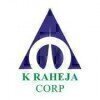Filter interviews by
SMEC Design Engineer Interview Questions and Answers for Experienced
SMEC Design Engineer Interview Experiences for Experienced
1 interview found
I applied via Approached by Company and was interviewed in Jul 2022. There were 2 interview rounds.

(2 Questions)
- Q1. Regarding Uplift, overburden pressure. Overturning,
- Q2. Regarding types of tanks and conditions, crackwidth criteria and conceptual questions from code and methodology for designing a structure, how loads calculated, Hydrodynamic stress ??
Interview Preparation Tips
Design Engineer Jobs at SMEC
Top trending discussions






Interview questions from similar companies

I appeared for an interview in Feb 2025.
(3 Questions)
- Q1. Basic fundamentals of plumbing and fire fighting system.
- Q2. Fire pump room single line diagram and working.
- Ans.
A fire pump room single line diagram illustrates the components and flow of water in fire protection systems.
Includes main components: fire pump, controller, water supply, and discharge piping.
Fire pump types: centrifugal, positive displacement, each suited for different applications.
Controller manages pump operation, ensuring automatic activation during fire alarms.
Water supply sources: municipal water, tanks, or rese...
- Q3. Fire pump technical data sheet detail.
Plumbing and fire fighting NBC code Standard etc.
(2 Questions)
- Q1. Salary discussion.
- Q2. Why to join our organisation.
- Ans.
I am excited to join your organization for its innovative projects, collaborative culture, and commitment to professional growth.
Innovative Projects: Your organization is known for cutting-edge technology, such as the recent AI-driven solutions that enhance user experience.
Collaborative Culture: I appreciate the emphasis on teamwork, as seen in your recent cross-departmental project that improved product delivery times...

I applied via Naukri.com and was interviewed before Aug 2023. There was 1 interview round.
(6 Questions)
- Q1. Use of shunt relay in acb.
- Ans.
A shunt relay in an ACB is used to provide protection against overcurrents by diverting excess current away from the main circuit.
Shunt relay is connected in parallel with the main circuit of the ACB.
It detects overcurrents and activates to divert the excess current through a shunt path.
This helps in protecting the main circuit from damage due to overcurrents.
Shunt relays are commonly used in Air Circuit Breakers (ACBs...
- Q2. What is coc in hvac.
- Ans.
CoC in HVAC stands for Certificate of Conformance, which is a document certifying that a product meets specified requirements.
CoC in HVAC is a Certificate of Conformance that ensures a product meets specific requirements.
It is often required in HVAC projects to ensure quality and compliance.
CoC may include details such as product specifications, testing results, and manufacturer information.
- Q3. What is Biological oxygen demand and Carbonic oxygen demand in STP Plant.
- Ans.
Biological oxygen demand (BOD) and Chemical oxygen demand (COD) are important parameters in wastewater treatment plants.
Biological oxygen demand (BOD) is a measure of the amount of dissolved oxygen needed by aerobic biological organisms to break down organic material in water.
Carbonaceous oxygen demand (COD) is a measure of the amount of oxygen required to oxidize all the organic and inorganic matter in water.
BOD is a ...
- Q4. What is voltage monitoring relay.
- Ans.
A voltage monitoring relay is a device that monitors voltage levels and triggers an alarm or protective action if the voltage exceeds or falls below a set threshold.
Monitors voltage levels in electrical systems
Triggers alarm or protective action if voltage exceeds or falls below set threshold
Used to protect equipment from damage due to voltage fluctuations
- Q5. Working principle of wtp plant.
- Ans.
WTP plant works on the principle of physical and chemical processes to remove impurities from water.
Water enters the plant and goes through processes like coagulation, flocculation, sedimentation, filtration, and disinfection.
Coagulation involves adding chemicals to water to make impurities clump together.
Flocculation helps in forming larger particles called floc for easier removal.
Sedimentation allows the floc to sett...
- Q6. What is your daily and monthly Reports.
- Ans.
I provide daily and monthly reports on project progress, issues, and key metrics to track performance.
Daily reports include updates on tasks completed, challenges faced, and plans for the next day.
Monthly reports summarize overall progress, budget status, and any potential risks or delays.
Reports may also include key performance indicators (KPIs) such as project milestones achieved, budget variance, and resource utiliz...
Interview Preparation Tips

I applied via Approached by Company and was interviewed in Mar 2023. There were 3 interview rounds.

(1 Question)
- Q1. LT Side Equipments
(1 Question)
- Q1. Introduction & Salary

I applied via Approached by Company and was interviewed in Oct 2023. There were 4 interview rounds.
(2 Questions)
- Q1. Previous roles and responsibilities, reason for leaving the previous job
- Q2. What are the activities, you have handled
(3 Questions)
- Q1. Discussing the overall experience technically
- Q2. Various activities, about steel, manpower management, procurement
- Q3. Cranes, concrete pumps, RMC, vendor management, followup with different consultant and dept, coordination and correspondence.
(2 Questions)
- Q1. This was also technical round, Challanges faced on last project
- Q2. Project details of all executed projects
(1 Question)
- Q1. Why do you want to change, expectations and the type of project you have done so far, & final negotiation
Interview Preparation Tips
Be confident

I applied via Walk-in and was interviewed in Jun 2021. There were 3 interview rounds.
Interview Questionnaire
1 Question
- Q1. Related to building &infrastructure execution
Interview Preparation Tips

I applied via Approached by Company and was interviewed in Apr 2024. There was 1 interview round.
(2 Questions)
- Q1. No good questions
- Q2. Asking nonsense questions
Interview Preparation Tips

Interview Questionnaire
2 Questions
- Q1. What projects i had done in Bachelors?
- Ans.
I completed various projects during my Bachelor's degree, including a design project for a new bridge and a research project on renewable energy.
Designed a new bridge using CAD software
Researched and implemented renewable energy sources on campus
Collaborated with classmates on a group project to improve campus sustainability
- Q2. Where i did my 6 months internship?
- Ans.
I completed my 6 months internship at ABC Engineering Firm, where I gained hands-on experience in project management and design.
Internship at ABC Engineering Firm
Focused on project management and design
Hands-on experience gained
Interview Preparation Tips
Experience: I was fresher, so they usually ask me about my university projects and my final training.
Tips: It will be good if you relate your projects with the company profile.

I applied via Referral and was interviewed in Jan 2020. There were 3 interview rounds.
Interview Questionnaire
1 Question
- Q1. Previous project breif and some technical from fire protection system and electrical.
Interview Preparation Tips

I applied via Company Website and was interviewed before Jan 2023. There was 1 interview round.
(5 Questions)
- Q1. Chiller efficiency
- Ans.
Chiller efficiency is a measure of how well a chiller unit is able to cool a space while using the least amount of energy.
Chiller efficiency is typically measured by the Coefficient of Performance (COP), which is the ratio of cooling output to energy input.
Regular maintenance and cleaning of chiller components can improve efficiency.
Upgrading to a more energy-efficient chiller model can also increase efficiency.
Proper ...
- Q2. Which one more efficiently? Air cooled,or water cooled???
- Ans.
Water cooled systems are generally more efficient than air cooled systems due to higher heat transfer capabilities.
Water has higher heat transfer capabilities compared to air
Water cooled systems can maintain more consistent temperatures
Water cooled systems are typically used in high performance applications such as data centers and industrial machinery
- Q3. How we improved duct velocity?
- Ans.
Duct velocity can be improved by increasing the fan speed or reducing the duct size.
Increase the fan speed to increase the air velocity in the duct.
Reduce the duct size to increase the air velocity.
Use dampers or adjustable louvers to control and optimize the airflow.
Ensure proper sealing of duct joints to minimize air leakage.
Consider using smooth and straight ducts to reduce friction and improve airflow.
Regularly cle...
- Q4. What types of gas use chiller system?
- Ans.
The chiller system uses various types of gases for cooling purposes.
Common types of gases used in chiller systems include R-134a, R-410A, and ammonia.
R-134a is a hydrofluorocarbon (HFC) refrigerant commonly used in air conditioning systems.
R-410A is a blend of hydrofluorocarbons used as a replacement for older refrigerants.
Ammonia (NH3) is often used in industrial chiller systems due to its high cooling capacity.
Other ...
- Q5. How we decided the vrf system capacity as per area??
- Ans.
The VRF system capacity is determined based on the area's cooling and heating load requirements.
Calculate the total cooling load and heating load for the area
Consider factors such as insulation, windows, occupancy, and equipment
Select VRF system capacity based on the calculated load requirements
Consult with HVAC professionals for accurate sizing
Interview Preparation Tips
SMEC Interview FAQs
Tell us how to improve this page.
SMEC Interviews By Designations
- SMEC Field Engineer Interview Questions
- SMEC Engineer Interview Questions
- SMEC Graduate Engineer Interview Questions
- SMEC Project Engineer Interview Questions
- SMEC Assistant Manager Interview Questions
- SMEC Computer Operator Interview Questions
- SMEC Team Leader (Technical) Interview Questions
- SMEC Business Development Manager Interview Questions
- Show more
Interview Questions for Popular Designations
- Mechanical Engg. Design Interview Questions
- Senior Design Engineer Interview Questions
- Electrical Design Engineer Interview Questions
- Structural Design Engineer Interview Questions
- Piping Designer Interview Questions
- Auto CAD Designer Interview Questions
- Junior Design Engineer Interview Questions
- Hardware Design Engineer Interview Questions
- Show more
SMEC Design Engineer Interview Process for Experienced
based on 1 interview
Interview experience
Interview Questions from Similar Companies
SMEC Design Engineer Reviews and Ratings
based on 7 reviews
Rating in categories
|
Design Engineer
38
salaries
| ₹4.5 L/yr - ₹11.2 L/yr |
|
Field Engineer
31
salaries
| ₹3.5 L/yr - ₹9 L/yr |
|
Project Manager
24
salaries
| ₹5 L/yr - ₹13.1 L/yr |
|
Structural Design Engineer
22
salaries
| ₹4.2 L/yr - ₹15 L/yr |
|
Civil Engineer
21
salaries
| ₹2.5 L/yr - ₹9.5 L/yr |

JLL

CBRE

NoBroker

Lodha Group
- Home >
- Interviews >
- SMEC Interview Questions >
- SMEC Design Engineer Interview Questions for Experienced










